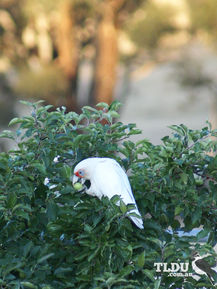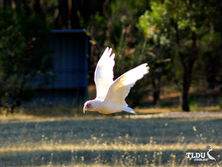
Shoppers Feedback:
Jan 17, 2017
Hello Ros,
I have now paid the invoice, but I would like to write to you just to say a big THANK YOU for getting me the Penguin!
The ChatterMate Penguin became a nice memory for me when I was in New Zealand, and I am so greatful to you for arranging so that I could have it! :-)
Thank you so much!!!!!!!!!!!
Regards,
Malin
Hi Ros,
Many thanks for your very kind email. I really appreciate your prompt reply!
I appreciate your advice regarding the decorations and customs. These are a gift for my daughter’s exchange student family so when she returns home on the weekend I will show her and see if she loves them as much as I do!
Thanks so very much again - I am truly grateful for your kind assistance.
Kind Regards
Bernadette
Ros,
Thanks again for the great customer service. It's a refreshing change!
Best regards,
Trevor
Hey Roz,
Thank you for your emails. Just loved my first order. The cute little Aussie bush critters are going to be used for an office Christmas decoration. My colleagues also liked them and talked about making an order to your site. I'll send you a photo when completed.
I'll be ordering more to send to my daughter's host family in America.
Fabulous service from you.
Kind regards,
Michelle
Thankyou. Order arrived today. One very happy grandson with his new beastly binoculars.
Regards,
Irene
- Home
- Wild Wonders
- Shop
- Aromas of Australia
- Australian Made
- Books
- Book Marks
- Christmas Decoration Sale
- Christmas Decorations
- Clocks
- Drink Holders
- Garden & Outdoor
- Gift Wrapping & Cards
- Home & Giftware
- Jewellery
- Keyrings
- New Products
- Pencils & Pen Holders
- Photo Frames
- Plush Toys
- Plush with Sound
- Sheepskin Rugs
- Stationery
- Stone Carvings
- Toys & Games
- Travel Goods
- Wedding
- Wild Figurines
- Wildlife Safety Products
- Wind Chimes
- Wine Charms
- View All Products
- Wildlife
- Australiana
- Explore
- Contact Us

Quick Facts
| Length: | 40 cm |
| Height: | - |
| Weight: | 567 grams |
| Colour: | White, long mandible to it's bill, orange-red splashes on forehead, with orange-red crescent acr |
| Habitat: | Grassy woddlands and grasslands, pastures and crops |
| Food: | Grass seeds, corns, bulbs and roots - especially the weed onion grass and insects |
| Predators: | - |
| Status: | Secure in NSW, SA, VIC & WA. Not Present in NT, QLD & TAS |
The Long-billed Corella is a medium-sized white cockatoo with a short crest (not always visible) and short tail, stocky body and a distinctive long upper mandible to its bill. There is a faint yellowish wash on the undersides of its wings and tail, and orange-red splashes on its forehead, throat and an orange-red crescent across its upper breast. The eye ring is pale grey-blue. It is a conspicuous and gregarious species, often seen foraging in large flocks on the ground.
The Long-billed Corella might be confused with the Little Corella, but can be distinguished by its long slim upper bill, bright orange-red head patches and orange-red markings on its breast. It is also slightly larger and heavier, and has a shorter tail than the Little Corella.
The Long-billed Corella is normally found only in the extreme south-east of Australia from south-eastern South Australia through western Victoria to southern New South Wales. However, it has established populations in other parts of eastern Australia (probably from escaped cage birds).
The Long-billed Corella prefers grassy woodlands and grasslands, including pasture and crops, as well as parks in urban areas.
Grass seeds are the preferred diet of Long-billed Corellas, particularly those from grain crops. They also eat corms, bulbs and roots, especially from the weed onion grass. Insects are also eaten. Native food plants include Murnong, but about 90 % of the diet now includes introduced food plants.
Long-billed Corellas form monogamous pairs and both parents prepare the nest, incubate the eggs and feed the young. Nests are made in the hollows of large old eucalypts, and sometimes in cavities of loose gravelly cliffs (scoria). The eggs are laid on a lining of decayed wood.
The Long-billed Corella can become a pest of grain crops and fruit trees, and permits are sometimes issued for shooting pest birds. It is quite successful in areas where feral populations have established themselves. However, the overall population may be in decline because of loss of suitable nesting sites (old trees with hollows) throughout its original range.
Last Updated: Thursday 18th July, 2013
BirdLife Australia - www.birdlife.org.au
BUSH e-TELEGRAPH
Signup for our monthly newsletter the "e-Telegraph"
Quick Links
Home | The Beginning | About The Land Down Under | Wild Wonders | Advertise on Wild Wonders | Christmas Decoration Sale | Christmas Tree Decorations | Drink Holders | Plush with Sound | Stone Carvings | Wildlife Wine Charms | Freebies | Australian Wildlife | Help Our Wildlife | Australiana | Photo of the Month | Explore The Land Down Under | Contact Us | Legal Notices


